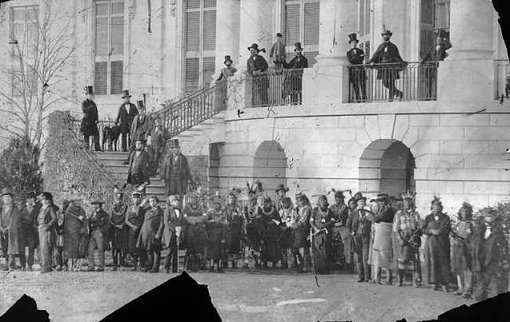http://www.pe.com/articles/hanks-770701-hall-father.html
What started as one woman’s quest to find a photo of her father who died when she was a toddler turned into a team effort that spanned centuries and led to a family relation to Abraham Lincoln.
Dale Hall moved to Hemet and started dabbling in genealogy about 20 years ago. She likes the research and being able to help others trace the roots and leafs of their family trees.
Then Connie Morris approached Hall about two years ago asking if she could help her step-sister, Diana Hanks, find a photograph of her father.
Hanks had an early childhood memory of her mother tearing up the only picture she had ever seen of her father, John Warner Hanks. By that time, her mother was remarried.
“My step-dad was a good man and took good care of me, but as I got older I just wanted to have a picture of my real father,” said Hanks, of Hemet.
She knew the circumstances of her father’s 1953 death. The family was living in Phoenix but traveled to Indio so John Hanks could visit his mother. During the trip, a tractor-trailer truck rear-ended his vehicle and he was killed, just a couple weeks shy of his 23rd birthday. He was buried in Indio.
“I knew physically where he was at; I just wanted a picture,” said Hanks, 64. She knew he had been in the military but all records had been burned. Her mother kept his birth and death certificates but Hanks wasn’t sure how that could help her.
When Morris contacted Hall about trying to find a photograph, Hall agreed but admits it seemed to be an arduous, if not impossible, task.
“She had had so many brick walls over the years, I just said that I couldn’t promise anything,” Hall said. “I took everything she had and started my research.”
There wasn’t much new information online, based on the documents she used.
“I decided to go back – a lot of times if we go back, we can go forward,” said Hall, a member of the Hemet San Jacinto Genealogical Society.
She was able to go back three generations by comparing names with dates and places of birth. She confirmed everything she found by checking marriage and other records against one another.
Diana Hanks’ great-grandfather, Pascal, was the key that unlocked everything. One of his sons, James William Hanks, had two sons – Stanley Oliver and John Warner. Hall was able to find cousins in the Sacramento area and told them what she was trying to find. One of them had three pictures.
“He sent me the pictures and I started crying. I knew I had found Diana’s father,” Hall said. “Diana not only got her father but a president, too,”
Her great-great grandfather, Joseph Hanks, was a nephew of Nancy Hanks Lincoln, making Pascal Hanks a second cousin to Abraham Lincoln. Now she has a binder filled with historic documents and information.
“It’s exciting to know that I am related to Abraham Lincoln but all I really wanted was a picture of my dad – and Dale found that for me. This is all that was important to me,” Hanks said as she held up one of the photographs.


